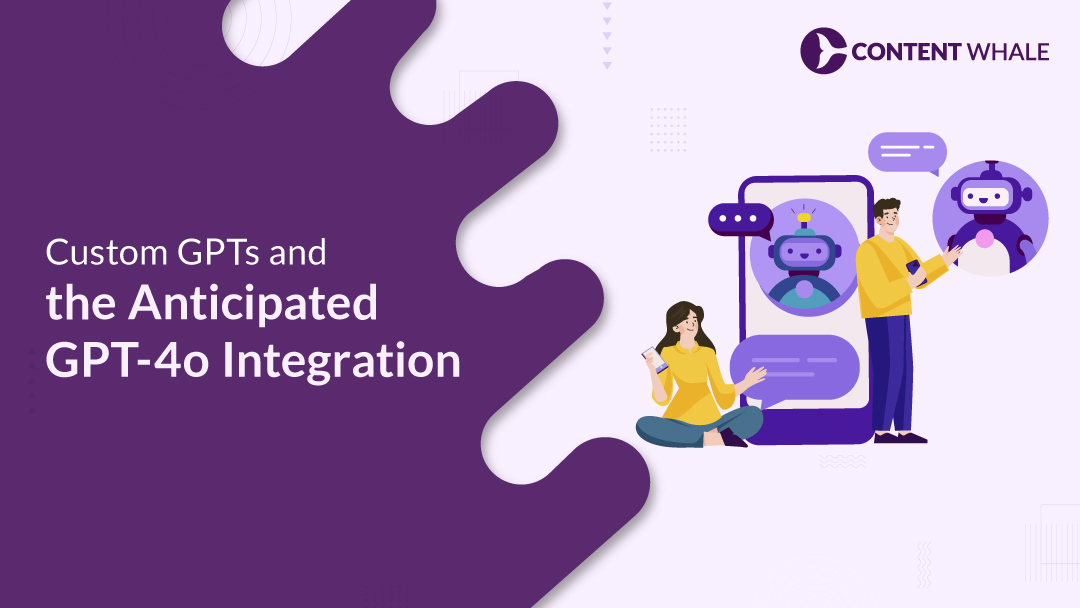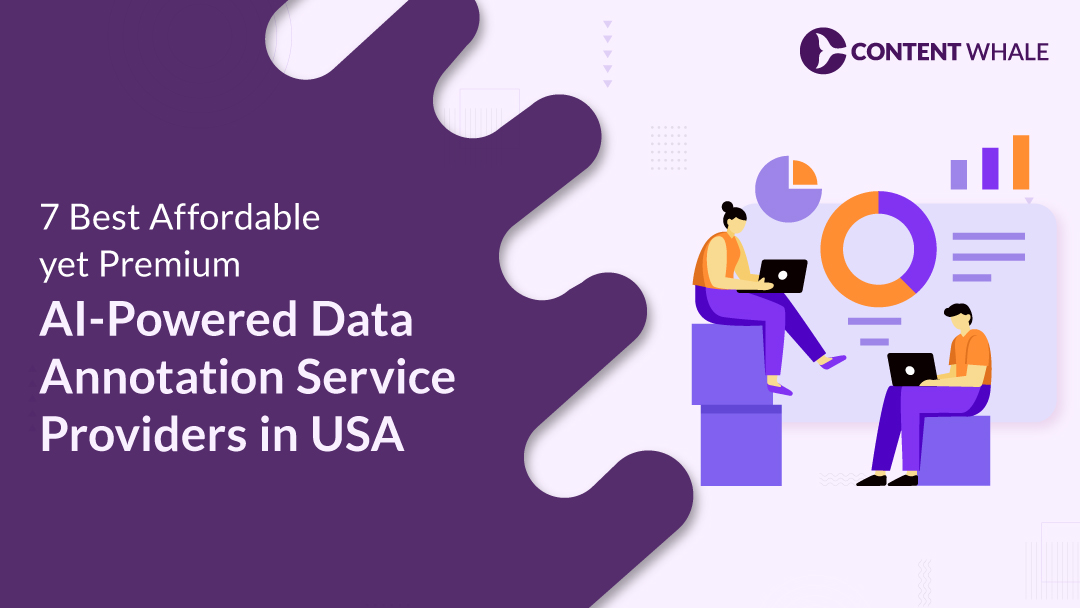Custom GPTs are about to experience a major boost. These AI models, essential for developers and businesses, enable personalized interactions that make AI solutions more effective and user-friendly. OpenAI’s recent announcement about integrating GPT-4o into Custom GPTs has generated a lot of excitement. This update promises better performance, faster processing, and enhanced capabilities, marking a significant advancement in AI technology.
What makes this update so exciting? GPT-4o is designed to deliver greater speed and efficiency compared to previous models, along with advanced multimodal capabilities, including text, vision, and audio processing. This means more accurate and responsive AI applications. As businesses and developers prepare for this integration, the potential for innovative solutions and more effective AI-driven outcomes is immense. Let’s explore what GPT-4o is, the benefits it will bring, and how to get ready for its rollout.
What is GPT-4o?
GPT-4o is OpenAI’s latest flagship AI model, designed to provide enhanced performance and versatility. This new model, where the “o” stands for “omni,” integrates text, vision, and audio capabilities, making it a significant advancement over its predecessors. GPT-4o offers faster processing speeds and improved efficiency, positioning it as a superior choice for various applications.
One of the standout features of GPT-4o is its multimodal capability. This means it can understand and generate responses based on text, images, and audio inputs. For instance, you can now take a picture of a menu in a different language, and GPT-4o will not only translate it but also provide information about the food’s history and significance. This feature enhances its utility in real-world scenarios where multimodal inputs are common.
Moreover, GPT-4o is designed to support real-time interactions, allowing for more natural and dynamic conversations. Users can now interrupt and engage with the model more fluidly, reducing the lag time that was present in earlier versions. This real-time responsiveness extends to its voice capabilities, where it can recognize and generate speech in various emotive styles, making interactions more engaging and intuitive.
Overall, GPT-4o represents a significant leap forward in AI technology, offering robust performance and versatile capabilities that can enhance a wide range of applications.
Current Capabilities of Custom GPTs
Custom GPTs current features have significantly advanced, providing a wide range of functionalities that cater to various needs. Here are some of the key capabilities that define their current features:
1. Personalized Interaction
Adaptive Responses: Custom GPTs current features include highly personalized interactions, adapting responses based on user input and context.
This is crucial for tasks requiring nuanced understanding and adaptability, such as customer service and personalized recommendations.
2. Multilingual Support
Language Proficiency: Supporting multiple languages is a significant part of Custom GPTs current features, enhancing usability across different regions.
This ensures accurate translations and culturally relevant interactions, making them invaluable for global applications.
3. Advanced Text Generation
Content Creation: Custom GPTs current features excel in generating high-quality text for various applications, including creative writing, technical documentation, and content marketing.
They assist in drafting, editing, and optimizing text to meet specific requirements.
Interactive Storytelling: These models create dynamic, interactive stories that evolve based on user choices, providing engaging and personalized narrative experiences.
4. Data Analysis and Interpretation
Insight Extraction: Custom GPTs current features include analyzing large datasets to extract meaningful insights, making them powerful tools for research, business analytics, and decision-making processes.
Real-time Processing: They process data in real-time, providing immediate analysis and feedback, which is crucial for applications requiring up-to-the-minute information.
5. Enhanced Accessibility
Voice and Vision Integration: Custom GPTs current features integrate voice and vision capabilities, allowing for more natural and intuitive user interactions.
This includes understanding and generating speech in various emotive styles and interpreting visual inputs like images and videos.
6. Automation and Efficiency
Task Automation: Custom GPTs current features automate repetitive tasks, such as scheduling, reminders, and simple administrative duties, increasing efficiency and productivity in various workflows.
These capabilities underscore the versatility and effectiveness of Custom GPTs, making them essential tools in numerous fields.
As these models continue to advance, they will likely offer even more refined and specialized functionalities, driving innovation and efficiency further.
Anticipated Benefits of GPT-4o for Custom GPTs
The integration of GPT-4o into Custom GPTs promises significant advancements and benefits, making these AI tools even more powerful and versatile.
Here are the key benefits anticipated with this update:
1. Enhanced Performance and Speed
Custom GPTs GPT-4o brings faster processing capabilities, significantly improving the responsiveness of AI applications.
This allows for more efficient interactions and quicker completion of tasks, enhancing user experience and productivity.
2. Improved Multimodal Capabilities
With GPT-4o, Custom GPTs can now handle text, voice, and vision inputs more effectively.
This multimodal capability means that users can interact with AI through various mediums seamlessly, such as translating images of menus or discussing the content of photos in real-time.
3. Advanced Language Support
GPT-4o enhances language processing abilities, supporting over 50 languages with improved accuracy and speed.
This makes Custom GPTs more accessible and useful for a global audience, providing accurate translations and culturally relevant interactions.
4. Real-Time Interaction
The update enables more natural, real-time conversations.
Users can interrupt and engage with the AI more fluidly, reducing the lag time that was present in earlier versions.
This is particularly beneficial for applications requiring dynamic and interactive communication, such as customer service and live suppor.
5. Data Analysis and Insights
GPT-4o enhances the ability of Custom GPTs to analyze and interpret large datasets in real-time. This feature is crucial for business analytics, research, and decision-making processes, providing immediate and actionable insights.
6. Expanded Accessibility
The update also includes new features such as memory, which helps maintain context over long conversations, and the ability to handle more complex queries. This makes Custom GPTs more useful for long-term projects and continuous interactions.
These benefits highlight the transformative potential of GPT-4o for Custom GPTs, driving innovation and efficiency across various fields. As these models continue to evolve, they will likely offer even more specialized and refined capabilities, further enhancing their value in diverse applications.
How to Prepare for GPT-4o Integration for Custom GPTs
Preparing for the integration of OpenAI GPT-4o into Custom GPTs involves several strategic steps to ensure a smooth transition and maximize the benefits of this advanced model.
Understand the New Capabilities
OpenAI GPT-4o introduces enhanced multimodal capabilities, allowing for more effective handling of text, voice, and vision inputs. Familiarize yourself with these features to leverage them fully in your custom applications.
Upgrade Your Infrastructure
Ensure your systems are capable of handling the increased performance and speed that GPT-4o offers. This may involve upgrading hardware or optimizing your current infrastructure to support real-time data processing and interactive capabilities.
Review and Update Custom Instructions
Revisit the instructions and parameters set for your Custom GPTs. The integration of GPT-4o may require adjustments to better align with its improved capabilities and performance standards. This includes fine-tuning response mechanisms and enhancing user interaction protocols.
Test Extensively
Conduct thorough testing to identify any issues that might arise from the transition to GPT-4o. This includes stress testing for performance under heavy loads and ensuring the AI’s responses remain accurate and relevant across various scenarios.
Train Your Team
Provide training for your team to understand the new functionalities and how to implement them effectively. This includes understanding the nuances of the multimodal capabilities and how to integrate them into existing workflows.
Monitor and Optimize
After integration, continuously monitor the performance of your Custom GPTs. Use analytics to track improvements and identify areas that might need further optimization. Regular updates and maintenance will be crucial to keeping your applications running smoothly with the new model.
These steps will help ensure that your transition to OpenAI GPT-4o is seamless and that you can fully capitalize on the Custom GPTs improvements this model brings.
Technical Expectations from GPT-4o Integration
The integration of GPT-4o into existing systems is set to significantly enhance AI capabilities, bringing several technical improvements that will benefit various applications.
Performance and Speed
GPT-4o integration promises faster processing and response times. This improvement will facilitate real-time interactions and enable more dynamic AI applications. For example, users can expect near-instantaneous translations and voice conversations without noticeable delays.
Multimodal Capabilities
The ability to handle text, voice, and vision inputs seamlessly is one of the standout features of GPT-4o. This multimodal capability means AI can now process and respond to a variety of inputs, such as translating a menu image into another language or analyzing a photo and providing detailed insights.
Enhanced Language Support
GPT-4o improves language processing capabilities, supporting over 50 languages with better accuracy and speed. This broadens the scope of AI applications globally, making them more accessible and effective for users from different linguistic backgrounds.
Advanced Data Interpretation
The model’s ability to analyze and interpret large datasets in real-time is significantly improved. This is beneficial for business analytics, research, and decision-making processes, providing immediate and actionable insights.
Real-Time Audio and Emotion Recognition
GPT-4o offers advanced audio capabilities, including real-time language translation and emotion recognition in voice interactions. This feature enhances the user experience by providing more natural and intuitive interactions.
These enhancements underscore the transformative potential of GPT-4o integration, driving innovation and efficiency across various fields. The expanded AI capabilities are expected to facilitate more sophisticated and responsive AI-driven solutions.
Future Prospects and Updates for GPT-4o and Custom GPTs
The GPT-4o rollout is poised to bring substantial enhancements to Custom GPTs, marking a significant Custom GPTs update. As OpenAI continues to innovate, several exciting updates and improvements are on the horizon.
Wider Accessibility and Use Cases
The GPT-4o rollout will initially target ChatGPT Plus and Team users, with Enterprise users following soon. Free-tier users will also gain access, albeit with certain usage limits. This strategic rollout ensures that a broad user base can benefit from the enhanced capabilities of GPT-4o.
Enhanced Multimodal Capabilities
GPT-4o integrates text, voice, and vision capabilities, setting a new standard for multimodal interactions. Users will be able to engage in more natural, real-time conversations, with improvements like live video conversations and real-time audio translations. These advancements will significantly enhance the utility of Custom GPTs in diverse applications.
Improved Language Processing and Accessibility
The model will support over 50 languages with better accuracy and speed, making Custom GPTs more effective globally. This improvement will help overcome language barriers, making AI more inclusive and accessible to users from different linguistic backgrounds.
Real-Time Interaction and Emotion Recognition
GPT-4o will offer real-time interaction capabilities, including emotion recognition in voice interactions. This feature aims to create more engaging and intuitive user experiences, improving the efficiency of customer service and other interactive applications.
Ongoing Updates and Iterative Rollout
OpenAI plans to introduce these features iteratively, ensuring that each update is thoroughly tested and optimized. This phased approach will help manage the integration of new capabilities while maintaining system stability and performance.
These updates signify a significant leap forward for Custom GPTs, promising more robust and versatile AI applications. The continuous improvements and strategic rollout of GPT-4o highlight OpenAI’s commitment to advancing AI technology and making it accessible to a wider audience.
Final Words
The recent Custom GPTs improvements and the introduction of GPT-4o features represent a significant leap forward in AI capabilities. Custom GPTs are set to become even more versatile and powerful with the integration of GPT-4o, which promises enhanced performance, faster processing, and advanced multimodal capabilities.
GPT-4o features include the ability to handle text, voice, and vision inputs seamlessly, making interactions more natural and intuitive. This upgrade will enable users to engage in real-time conversations, translate languages instantly, and analyze images and videos with greater accuracy. Additionally, the support for over 50 languages and improved data analysis tools will make Custom GPTs more accessible and useful globally.
OpenAI’s strategic rollout of GPT-4o aims to democratize access to advanced AI tools. Initially available to Plus and Team users, and soon to Enterprise and free-tier users, this phased approach ensures that a broad user base can benefit from the latest advancements in AI technology. The ongoing AI model updates and enhancements reflect OpenAI’s commitment to continuous improvement and innovation.
These Custom GPTs improvements and GPT-4o features are set to drive efficiency and innovation across various fields, from customer service and education to business analytics and creative applications. As these models continue to evolve, the potential for AI-driven solutions will expand, offering more refined and specialized functionalities to meet diverse user needs.
By staying updated with OpenAI’s plans, users can fully leverage the capabilities of GPT-4o and explore new possibilities in AI-driven applications. The future of Custom GPTs looks promising, with continuous updates and improvements paving the way for more sophisticated and impactful AI solutions.
FAQs about GPT-4o and Custom GPTs
1. When will GPT-4o be available for Custom GPTs?
The integration of GPT-4o into Custom GPTs is anticipated in the coming weeks. Currently, it is being rolled out to Plus, Team, and Enterprise users, with plans to extend availability to free-tier users as well. This phased approach aims to ensure a smooth transition and optimal performance for all users.
2. What are the primary benefits of GPT-4o features for Custom GPTs?
GPT-4o offers several enhanced features, including improved multimodal capabilities (text, voice, and vision), faster processing speeds, and advanced language support for over 50 languages. These improvements make Custom GPTs more versatile and efficient, enhancing their utility across various applications such as customer service, education, and data analysis.
3. How can I access the new GPT-4o features in Custom GPTs?
To access GPT-4o features in Custom GPTs, users need to be on the Plus, Team, or Enterprise plan. The rollout for free-tier users is also underway but with certain usage limits. Ensure your subscription is updated to take full advantage of the new capabilities offered by GPT-4o.
4. What improvements does GPT-4o bring to the performance of Custom GPTs?
GPT-4o significantly enhances the performance of Custom GPTs by providing faster response times, better handling of complex queries, and more accurate data processing. These enhancements make Custom GPTs more responsive and capable of delivering high-quality outputs in real-time interactions.
5. Will there be any changes in the way Custom GPTs handle data with GPT-4o integration?
Yes, GPT-4o integration includes improved data handling capabilities. This includes better real-time processing and the ability to analyze larger datasets more effectively. These changes will enhance the overall efficiency and accuracy of data-driven tasks performed by Custom GPTs.
6. Are there any known issues with the GPT-4o rollout for Custom GPTs?
While the GPT-4o rollout is designed to improve performance and capabilities, some users have reported initial issues such as slower response times and difficulty in integrating the new features seamlessly. OpenAI is actively working to address these issues and optimize the integration process.





